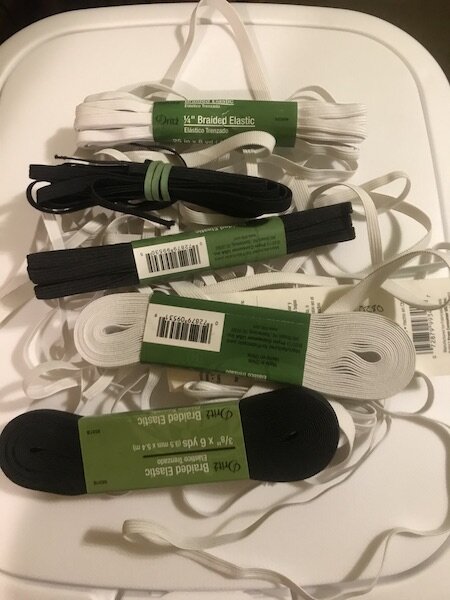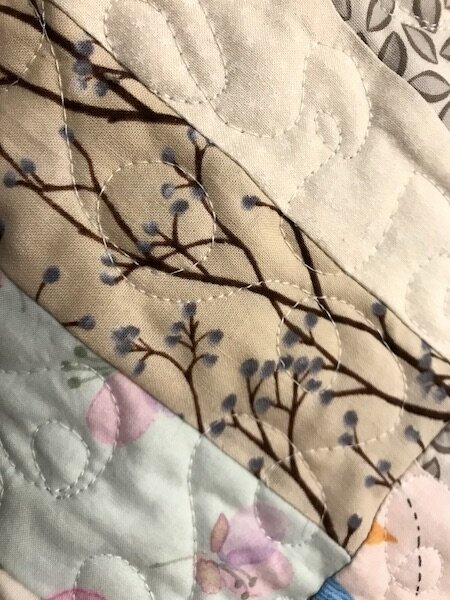The Seasons March On
Happy Easter! Our congregation will be celebrating together via Zoom this morning. The pastor and I did a trial run on Friday to ensure that having the piano prelude streamed from my living room would work. I can safely say this will be a first, as are many things this year.
I am cautiously optimistic that yesterday’s snow and windstorm will be the last of this season, although this is Montana and I know better than to pin my hopes on the weather. (We had snow on June 10 one year. I had to cover all of my tomato seedlings with coffee cans.) Events like yesterday’s storm bring everything to a standstill, and even though it’s only temporary, it is frustrating. I spent the day with a grumpy bear who could not get any of his outside projects done.
We ended up leaving the seedlings in the greenhouse. The husband got up in the wee hours yesterday and today to go out and make sure everything was okay. I took the row cover off the hoops Friday afternoon so the fabric wouldn’t be destroyed by the wind. He laid an old concrete blanket over the lettuce seedlings yesterday to protect them from the projected 15-degree overnight temperature. Those old concrete blankets get a lot of use in the garden. They’re invaluable for keeping the tomatoes going through the end of September.
Fortunately, this windstorm was not strong enough to take down any more trees, nor did we lose power. I made a batch of masks in the morning and then worked on the latest Candy Coated quilt all afternoon. I hadn’t planned to finish this one so soon, but it was all basted together and waiting. I did an overall loop pattern on the last Candy Coated, but this version is slightly bigger (ending up at 72” x 80” because I made the individual rows longer). I didn’t feel like wrestling it through the machine to quilt an overall design. I decided straight lines with the walking foot would be easier and faster.
Blue painter’s tape is a good thing to have in the sewing room. I used it to make a diagonal line from corner to corner:
I quilted alongside that line, tore off the tape, then used the guide bar on my machine to follow the first line and quilt additional lines 2” apart. Finding a suitable thread color took a bit of doing—for some reason, I still do not have a cone of beige 40wt thread. I pulled out lengths of white, pale yellow, and brown and laid them on top of the quilt. The white was too bright. The brown was too dark. The pale yellow ended up working perfectly.
This is the backing:
It is a Juliana Horner print from several years ago. Juliana is the daughter of fabric designer Anna Maria Horner and a talented artist in her own right. She designed a line of fabric for Joanns that was delightfully quirky and I bought up everything I could get my hands on. I’ve got chunks of various prints in the stash. This was one five yards long. I used a bit more than four yards and have enough left for an apron. I may gift this Candy Coated quilt to someone, so I was willing to use up some of my more special (to me) fabric. Also, this print looked cheerful and spring-like.
[I know a lot of sewists refuse to buy fabric at Joanns because they believe it to be of inferior quality than that of quilt store cottons. I am all for supporting local fabric stores and I am greeted by name whenever I walk into either of the two quilt stores in Kalispell. During my recent stash dives to find fabric for masks, however, I pulled out some prints from fabric companies that only sell through independent quilt stores and was dismayed to discover that they were of lesser quality (thinner) and only 40” wide instead of 42”-44”. I don’t think that “chain stores carry inferior fabric” is a strong correlation to make. This Juliana Horner print is a quality fabric with a beautiful hand. I never had much use for yarn snobs (Lion Brand Lion Wool was a wonderful yarn and only available at Joanns and Michaels) and I have little use for fabric snobs, either.]
The bobbin thread is a mint green 50wt Aurifil that blends in nicely with the Juliana Horner print. I got all of the diagonal lines quilted in one direction yesterday. The husband wants to plant potatoes this afternoon, so I may not get to work on this again today, but it’s only going to require a few more hours’ worth of work to quilt lines in the other direction. And making this quilt put a significant dent in the scrap bag.
The weather is supposed to improve this week. The corn seedlings are going to outgrow their pots soon, so I’m planning to build more hoops and get them and perhaps the cowpeas out into the garden. Oh, and we had another earthquake yesterday. This one was only 3.3—I didn’t feel it—but the epicenter was only 30-ish miles away. I was very surprised to see the notification pop up on my phone.







































